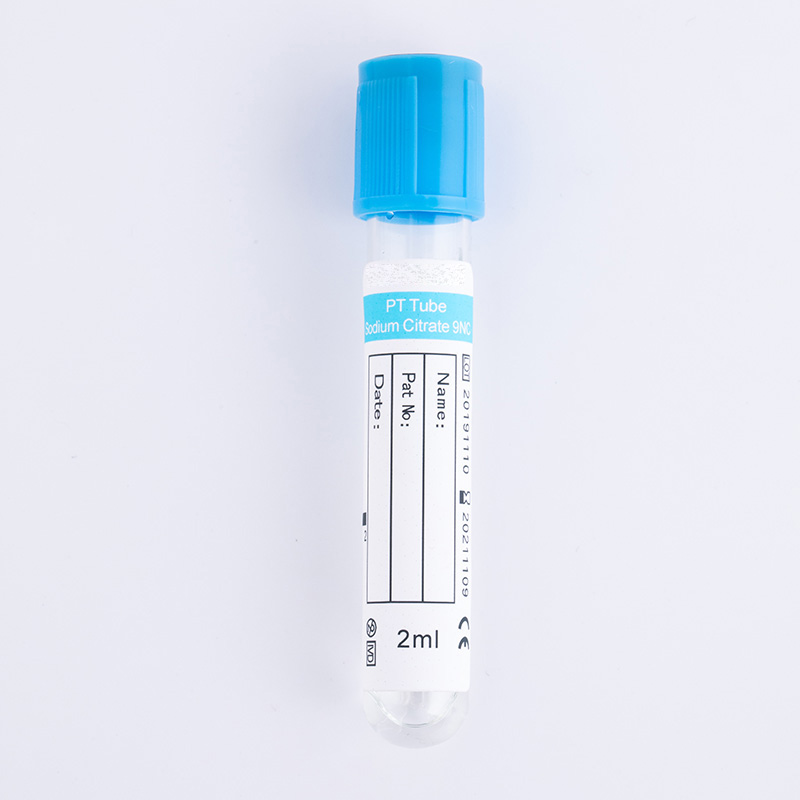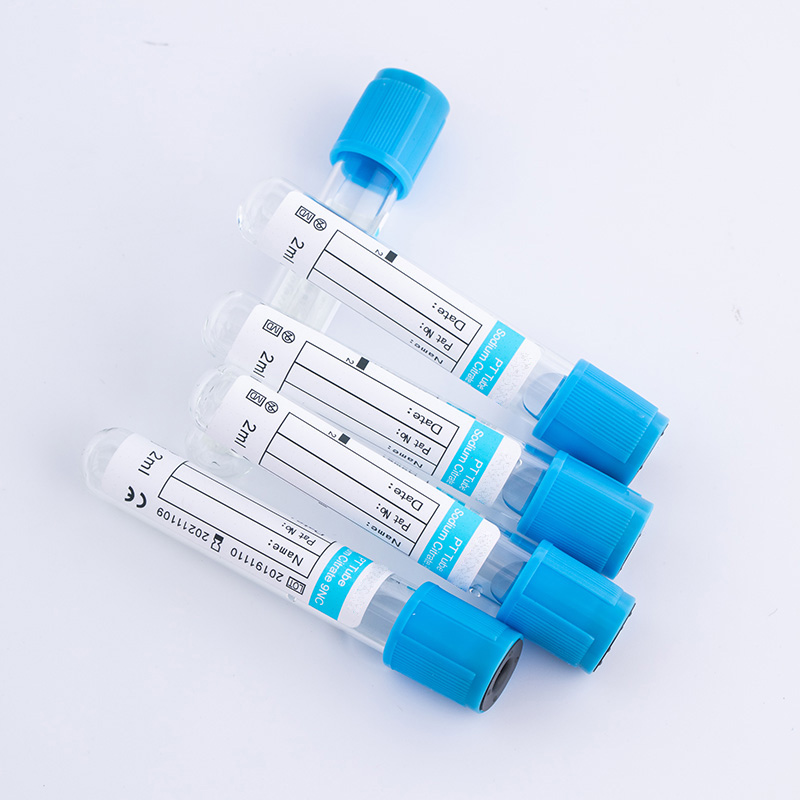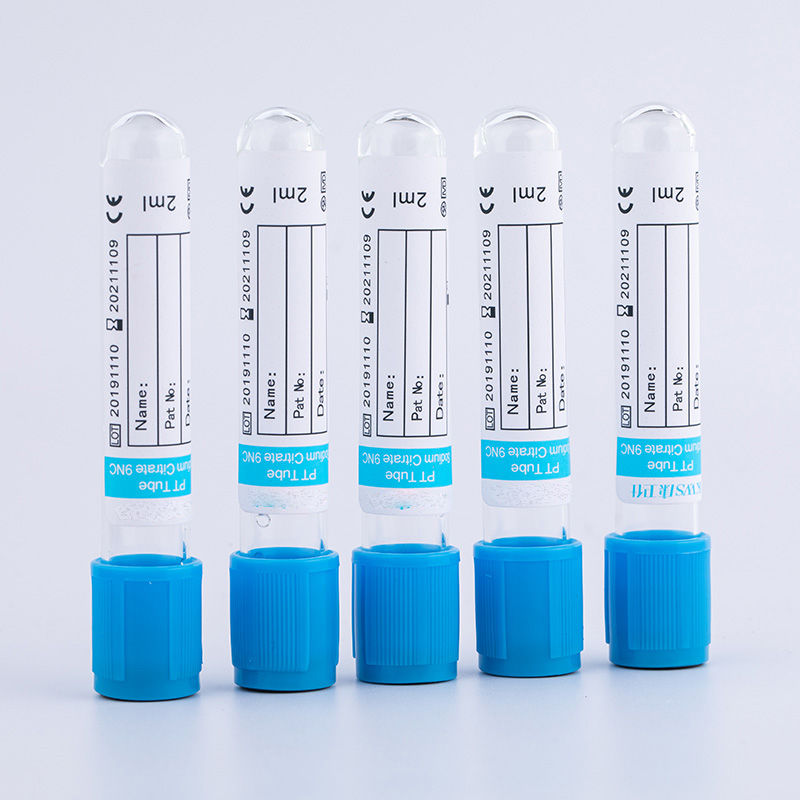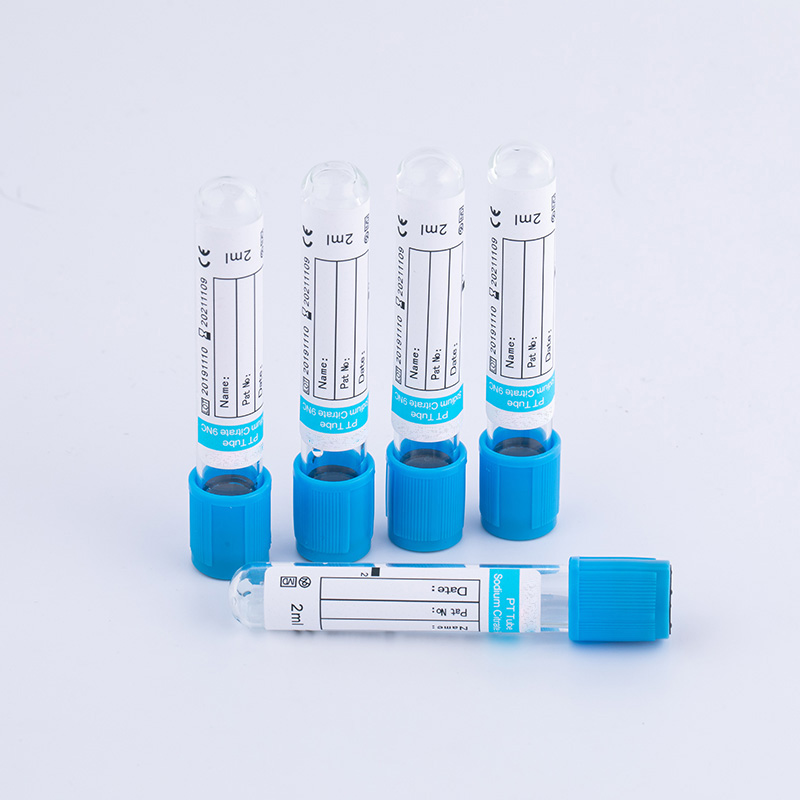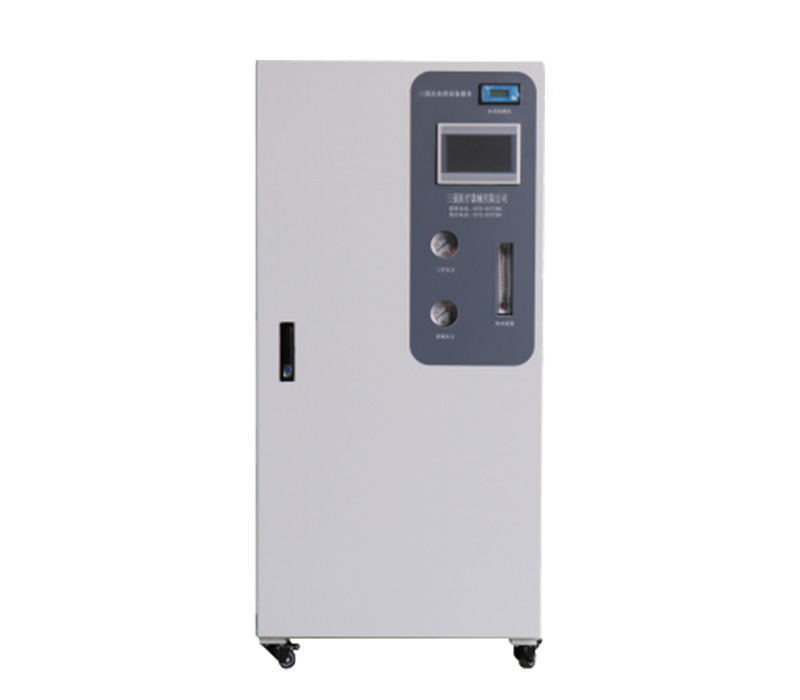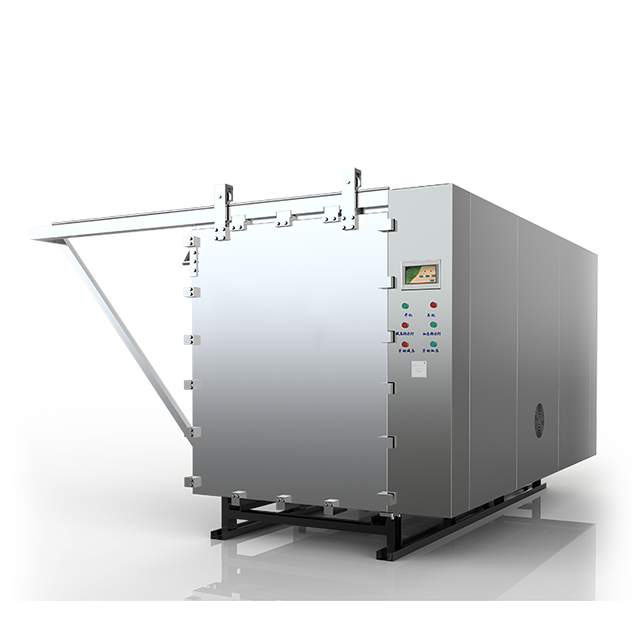Blood Collection Tubes

PT Tube
Sodium citrate functions as anti-coagulant via chelation with calcium in blood. Concentration of sodium citrate is 3.2% and the volume ratio of anti-coagulant vs. blood is l:9. It is mainly used for coagulation test (prothrombin time, thrombin time, active partial thromboplastin time, fibrinogen). The mixing ratio is 1 part citrate to 9 parts blood.
-
Description
A PT Tube is another name for a standard blood collection tube used For coagulation tests. It has sodium citrate used as an anticoagulant because it combines with calcium ions in the blood sample and may clot. This tube is required for PT, TT, aPTT and fibrinogen level to determine how efficiently the patient’s blood is clotting.
Features of PT Tube
- Anticoagulant (Sodium Citrate): Consists of a 3.2% sodium citrate solution for anti-coagulant properties with the calcium ion chelating properties inhibiting blood clot formation.
- Precise Ratio: To reduce the probability of errors the ratio of sodium citrate to blood is 1:9 proportion hence the provision of accurate results.
- Non-Toxic: The low to potentially toxic sodium citrate solution is suitable for use in blood storage so as to facilitate long durations of analysis and tests.
- Double-Deck Design: Reduces dead volume that enables efficient sample mixing and proper distribution of anticoagulant good for platelet and vWF assays.
- Durable Materials: Made from PET or glass depending on chemical compatibility and sample type.
- OEM Customization: Possible extra designs and logos, thus improving the brand image of medical centers.
Applications of PT Tube
- Coagulation Tests: Used in common coagulation assays including PT TT aPTT & fibrinogen in which it works to coagulant or clotting functions.
- Diagnostic Support for Blood Disorders: Continues to recommend blood test on clotting times that helps diagnose hemophilia, deep vein thrombosis, and liver diseases.
- Platelet Function and vWF Tests: Double-deck PT tubes are suitable for use in platelet functional tests and the vWF assays which are used in monitoring of coagulation and platelet disorders.
- Heparin Therapy Monitoring: Sometimes could be valuable in assessing the effect of anticoagulant agent such as heparin in patients hence enabling the providers to manage treatment better.
More Vesemed Products
View all patient monitors, medical devices and products in one convenient location.


